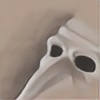HOME | DD
 Bionautic — Oricillidae
Bionautic — Oricillidae

#alien #aliencreature #alienplanet #biology #creature #creaturedesign #exobiology #science #sciencefiction #speculativeevolution #speculativebiology #speculativezoology
Published: 2020-03-09 18:14:23 +0000 UTC; Views: 4311; Favourites: 79; Downloads: 8
Redirect to original
Description
Oricillidae is diverse family of marine invertebrates that all share a similar morphological structure: A large bulb serving as the primary abdomen, a long proboscis-like mouth extending straight downward, and six sensory tentacles.The bulb of these organisms is made up of a thin membrane and water intake cap. Inside, along with digestive organs, it houses multiple gas filled sacks which it are used to keep the creature buoyant and to maintain its position in the water column. The gases inside are excreted as a byproduct by bacteria in the organisms gut. Note: these organisms are not illustrated to relative scale.
O. spinocaulus is the largest organism of this family (1.5 meters tall). Found off of Islas coast, it hovers above the sea floor searching for small invertebrates and other edible debris on which it can feed. It uses its six long tentacles to sense its environment, as well as to help it navigate its surroundings.
N. pelagicus is a small (10-15 cm) organism that inhabits the open ocean. It is almost perfectly translucent, an adaptation which helps it to hide from predators which utilize eyesight. Its mouth, unlike like the long proboscis of its cousins, is broken into many small tentacles, which snare floating plankton and pull them into its oral cavity.
B. Croculata (80 cm tall) is a predatory species that scours Islas vast oceanic sand plains, searching for prey. Its mouth is far shorter than that of its cousin O. spinocaulis, however it can stretch when feeding, and packs a nasty surprise. At its tip there are many sharp spines containing a potent neurotoxin. When preying on shelled invertebrates, it pierces their armor and injects its venom. Once paralyzed, B. Croculata forces its mouth into the body cavity of the creature and consumes it from the inside out.
Questions and critiques are welcome!
PS: I'll have a couple diagrams of the tendrils and internal organs coming soon.
Related content
Comments: 4

👍: 1 ⏩: 0

Great work. I love how methodical you are in both design and execution. The organisms are beautifully rendered.
👍: 1 ⏩: 0

👍: 0 ⏩: 0


















